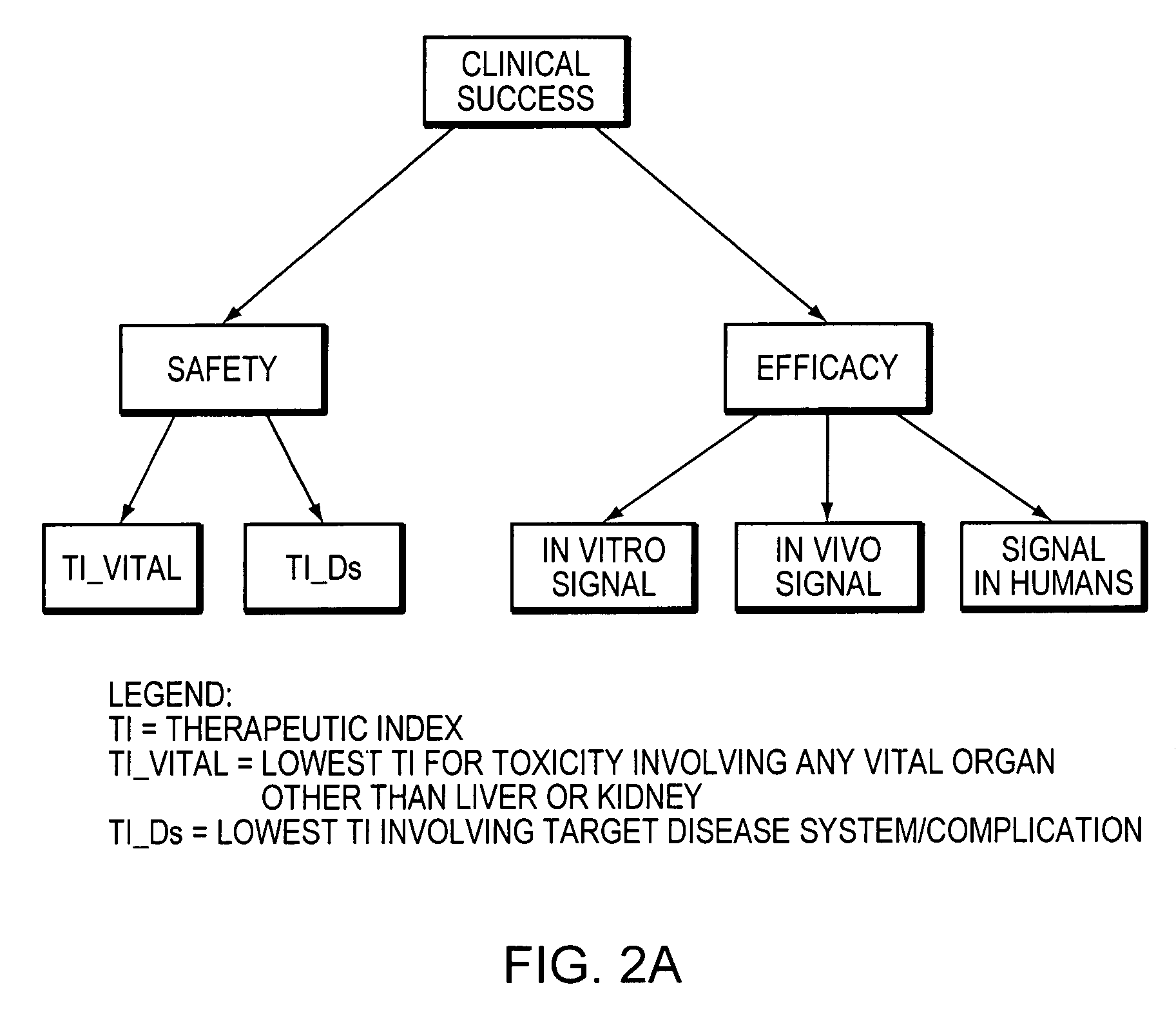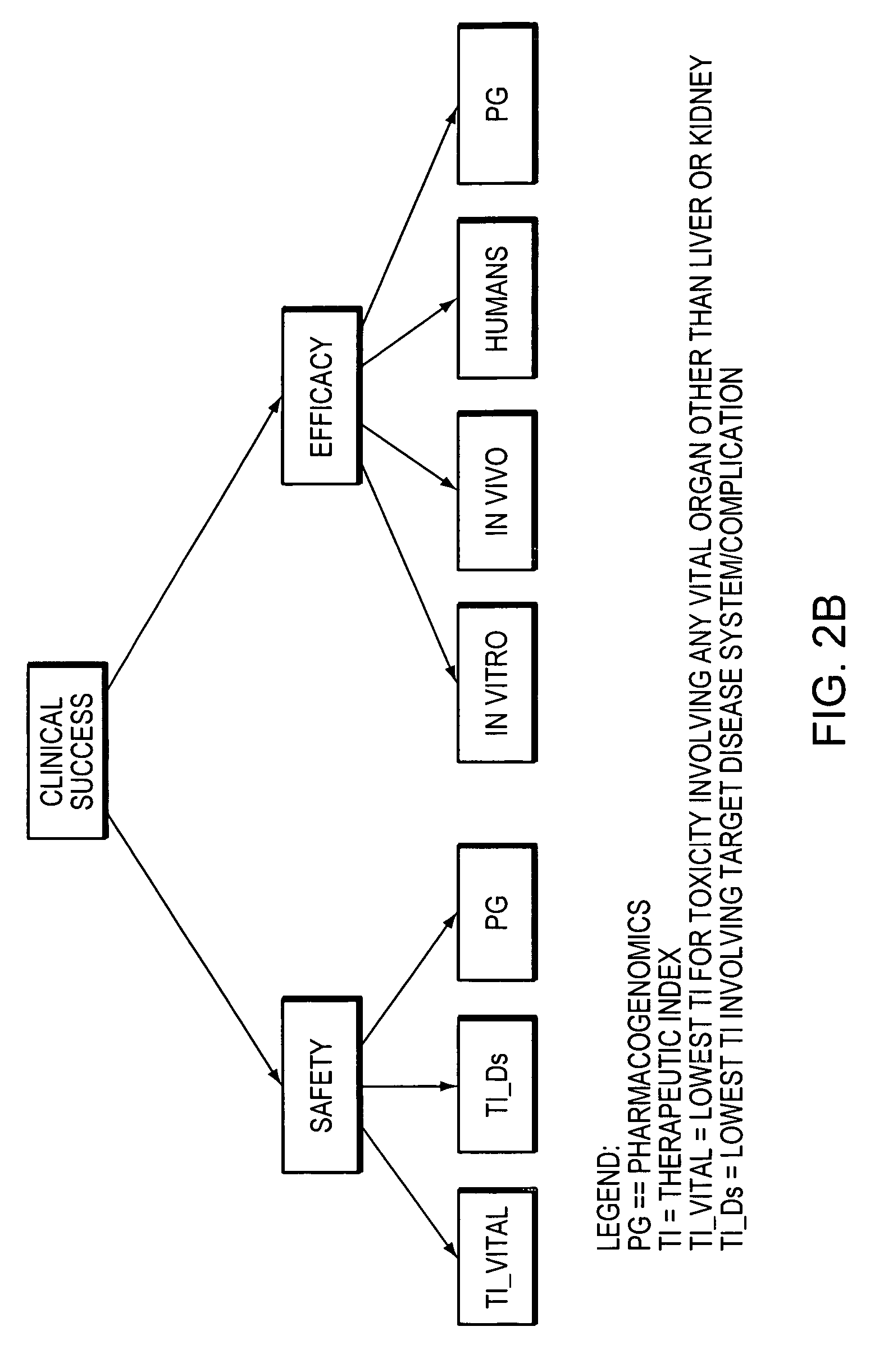Method and apparatus for evaluating new chemical entities
a new chemical entity and a technology of belief network, applied in the field of chemical analysis, can solve the problems of increasing the number of early-phase nces under consideration for further costly human clinical trials, requiring consistently huge research and development expenses, and reducing the number of new chemical entities to be evaluated
- Summary
- Abstract
- Description
- Claims
- Application Information
AI Technical Summary
Problems solved by technology
Method used
Image
Examples
example 1
ictional)
[0095] CurOnc is a fictional anti-neoplastic agent devised solely for the purpose of illustrating some key features of Pharminator. CurOnc is self-originated in the USA and meets the definition of “life-saving”. The signal inputs, TI inputs, and Clinical Success probability distribution plots are shown in FIG. 10. The Safety and Efficacy probability distribution plots are shown in FIG. 11. The effect of changing the life-saving option to “Not Life-Saving” is shown in FIG. 12. The effect of changing the prior bias to optimistic is shown in FIG. 13. Overall, the probability distributions generated by Pharminator suggest that CurOnc has a high probability of efficaciousness (0.7872), but is also very likely to have significant toxicity (P(Safety=T)=0.0645). Therefore, if CurOnc is indeed “life-saving”, it has a probability of Clinical Success of 0.4951 with little overlap between the Clinical Success prior (0.2304) and posterior probability distributions. However, if CurOnc is...
example 2
(rhAPC)
[0100] Recombinant human activated protein C (rhAPC) is a relatively novel agent that is known for its anti-coagulant, pro-fibrinolytic, and anti-inflammatory properties. Eli Lilly™ Research laboratories has developed LY203638 (rhAPC) as a novel therapy for sepsis (Clinical Investigator's Brochure kindly provided by Dr. Robert Rubin). In general, this example is limited in that several unpublished pre-clinical efficacy studies are listed in the Clinical Investigator's Brochure, but no data are accessible. The most relevant in vitro study was used. This in vitro study was performed prior to the go / no-go decision time point. Bajzar et al reported dose-dependent lysis times, but did not include any measures of variability. Therefore, in vitro variance is set to 0 for both the NCE and control (the in vitro variance entries are actually set to 0.000001 because the program's current implementation will not calculate posterior probabilities if any value is 0. This minor problem will...
PUM
| Property | Measurement | Unit |
|---|---|---|
| mean residence time | aaaaa | aaaaa |
| mean residence time | aaaaa | aaaaa |
| time | aaaaa | aaaaa |
Abstract
Description
Claims
Application Information
 Login to View More
Login to View More - R&D
- Intellectual Property
- Life Sciences
- Materials
- Tech Scout
- Unparalleled Data Quality
- Higher Quality Content
- 60% Fewer Hallucinations
Browse by: Latest US Patents, China's latest patents, Technical Efficacy Thesaurus, Application Domain, Technology Topic, Popular Technical Reports.
© 2025 PatSnap. All rights reserved.Legal|Privacy policy|Modern Slavery Act Transparency Statement|Sitemap|About US| Contact US: help@patsnap.com



